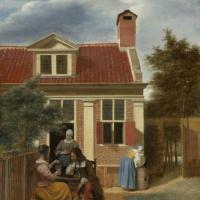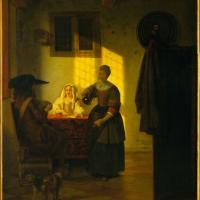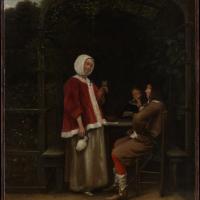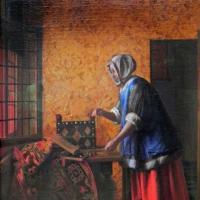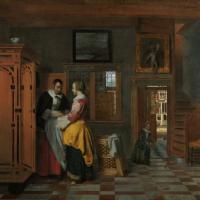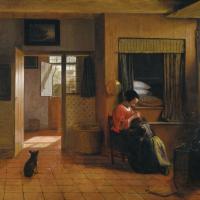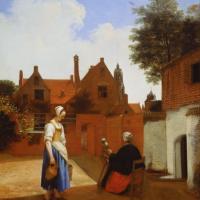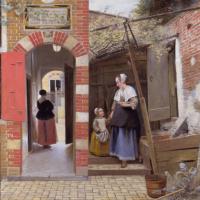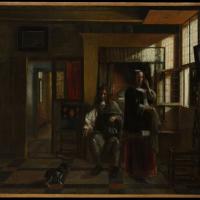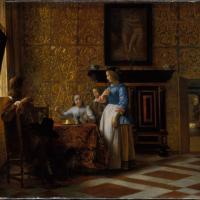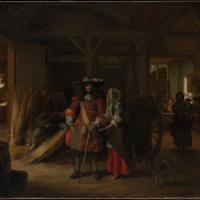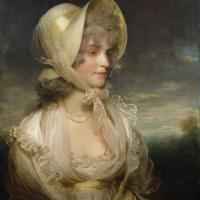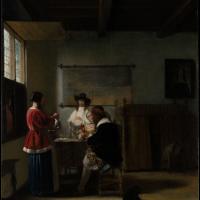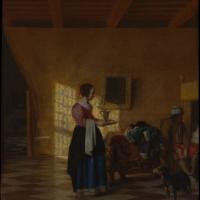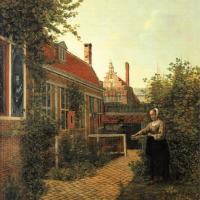Pieter De Hooch
At The Linen Closet
$480.00
Mary Anne Nugent
$480.00
Paying The Hostess
$480.00
The Hon. Lucy Byng
$480.00
The Visit
$480.00
Pieter De Hooch
Pieter De Hooch (1629-1684)
Pieter de Hooch ( also spelled "Hoogh" or "Hooghe"; 20 December 1629 (baptized) – 24 March 1684 (buried)) was a Dutch Golden Age painter famous for his genre works of quiet domestic scenes with an open doorway. He was a contemporary of Jan Vermeer in the Delft Guild of St. Luke, with whom his work shares themes and style.
De Hooch was born in Rotterdam to Hendrick Hendricksz de Hooch, a bricklayer, and Annetge Pieters, a midwife. He was the eldest of five children and outlived all of his siblings. Little is known of his early life and most archival evidence suggests he worked in Rotterdam, Delft, and Amsterdam. According to his first biographer Arnold Houbraken, he studied art in Haarlem under the landscape painter Nicolaes Berchem at the same time as Jacob Ochtervelt and was known for his "kamergezichten" or "room-views" with ladies and gentlemen in conversation. But De Hooch's work seems to continue in the spirit of Hendrik Sorgh, an older Rotterdam painter who had a special affinity for organizing figures in interiors. Beginning in 1650, he worked as a painter and servant for a linen-merchant and art collector named Justus de la Grange in Rotterdam. His service for the merchant required him to accompany him on his travels to The Hague, Leiden, and Delft, to which he moved in 1652. It is likely that de Hooch handed over most of his works to la Grange during this period in exchange for board and other benefits, as this was a common commercial arrangement for painters at the time, and a later inventory recorded that la Grange possessed eleven of his paintings.
De Hooch was married in Delft in 1654 to Jannetje van der Burch, by whom he fathered seven children. While in Delft, de Hooch is also believed to have learned from the painters Carel Fabritius and Nicolaes Maes, who were early members of the Delft School. He became a member of the painters' guild of Saint Luke in 1655 (two years after Vermeer). His daughter Anna was born in Delft on 14 November 1656. Based on the fact that his wife attended a baptism in Amsterdam in 1660, it has been determined that he moved to Amsterdam by then, though the success of the trekschuit by then meant that a trip to Amsterdam could be made easily in a day.


